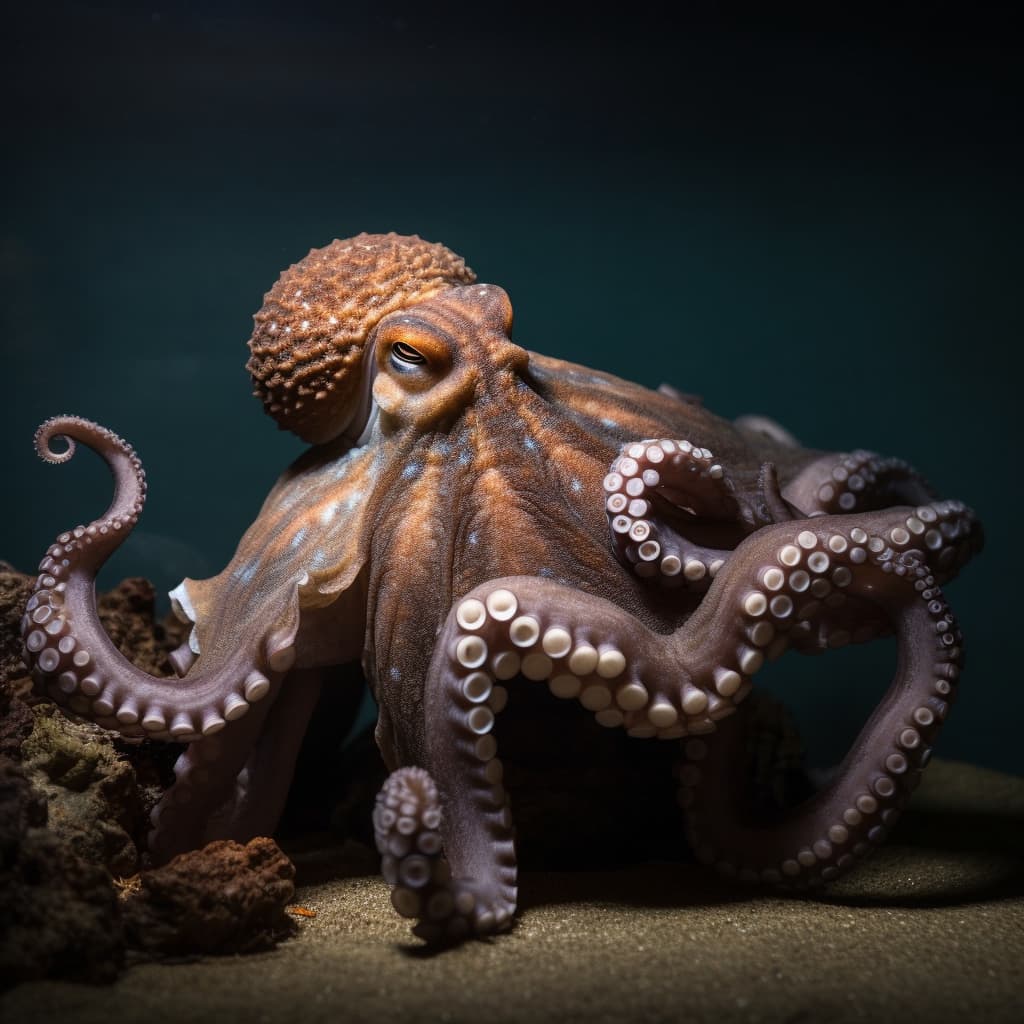AI generated content
This content is generated by an AI and does not reflect the opinions or views of individuals, either living or deceased.
| Text generated by | ChatGPT (GPT-4) |
| Text prompt | Write a blog post on the anatomy of octopuses |
| Image generated by | Midjourney |
| Image prompt | An octopus |
Inside the Eight Arms: Unraveling the Fascinating Anatomy of Octopuses

For anyone intrigued by the mysteries of the sea, the octopus stands out as one of the most captivating creatures. Known for their intelligence, dexterity, and unique appearance, these animals are truly wonders of the marine world. But what makes them so remarkable? The key lies in their fascinating anatomy.
Eight Muscular Arms
One of the most recognizable aspects of an octopus is its eight arms, each lined with suckers that serve multiple functions. These are not just for grabbing prey; they're also sensory organs that taste, smell, and feel the world around them. The arms are incredibly strong and flexible due to a complex muscle structure and lack of bones, allowing an octopus to perform delicate tasks or squeeze through tiny spaces.
The Mighty Beak
Hidden within the soft, malleable body of the octopus is a hard, parrot-like beak, the only solid part of their body. This beak is crucial for their survival as it is used to crack open shellfish and inject venom into prey. It also facilitates their ability to squeeze into incredibly tight spaces as the rest of their body can compress to the size of the beak.
Master of Camouflage
Perhaps one of the most awe-inspiring aspects of octopus anatomy is their skin. Equipped with specialized cells called chromatophores, octopuses can change the color and texture of their skin in a split second. This ability helps them blend seamlessly with their surroundings, making them masters of camouflage.
Three Hearts and Blue Blood
If one heart is good, three must be better. Octopuses have a central heart that pumps blood to the body and two additional hearts that pump blood to each of the two gills. But that's not the end of their cardiovascular curiosities. Their blood is blue due to a copper-based protein called hemocyanin, which is more efficient than hemoglobin for oxygen transport in cold, low-oxygen environments.
A Brain for Problem Solving
Octopuses possess an unusually large brain for invertebrates, with a majority of its neurons located in the arms. This decentralized nervous system enables each arm to act independently, contributing to their problem-solving and escape artist skills.
The anatomy of the octopus is a marvel of evolutionary adaptation. Each aspect of their physiology contributes to their survival in the often harsh marine environment. Their unique features like the flexible arms, the hard beak, the color-changing skin, multiple hearts, and the large, decentralized brain all make the octopus an outstanding testament to nature's creativity.
So, the next time you think about the wonders of the animal kingdom, remember the octopus. These intelligent, adaptable creatures remind us of the infinite ways life has evolved in our incredible world. Stay tuned for more insights into the marvels of the natural world, as we continue to explore the remarkable diversity and adaptability of life on Earth.
